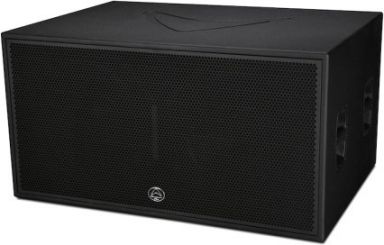Passive subwoofers
Passive subwoofer
Passive subwoofers, just like active devices, bring the bass into the booth. As a supplement to the home music system that relieves the high and mid-frequency speakers, for the real cinema feeling at home or for crystal-clear low-frequency sound in the studio - passive subwoofers bring with them some advantages that cause discussion in the industry.
Decent bass with subwoofers
For full listening pleasure, the subwoofer must not be missing - neither in the home theater nor on the music system at home or in the car. This speaker reproduces the low sound frequencies and amplifies them. This turns stereo into an engaging surround sound. The subwoofer is also called a bass box or low frequency speaker. Active and passive subwoofers cover the low frequency range that normal speakers cannot. Even though the bass tones are sometimes barely audible, they resonate and bring the right vibe.
Active vs. passive subwoofer: What's the difference?
Active subwoofers
The active bass box is an independently operating speaker with built-in amplifier. For the right sound performance, all internal components of the device are tuned to each other. Receivers or external amplifiers thus only have to operate the midrange and treble speakers.
What makes a subwoofer passive?
Just like the active subwoofer, the passive subwoofer also amplifies bass for the full, rich music experience. Passive subwoofers are when they rely on an external amplifier or A/V amplifier to power it. To run a passive subwoofer, more power is needed for the system. That's why many people like to go for the active version. But that could be a rash decision.
Why a passive subwoofer?
The big difference to the active subwoofer is that the passive bass box does not come with its own amplifier. At first, it seems awkward to connect an external amplifier upstream. However, this brings some acoustic and pragmatic advantages:
No extra power needed: The passive subwoofer does not need an external power supply, as this runs via the upstream amplifier. This means you have one less unsightly cable and can choose the position of the passive woofer freely from the socket availability.
Less susceptible to interference: This also means that there is no typical mains hum or clicking, as is usually the case with powered acoustic devices. The general background noise is absent from the passive subwoofer, making it a reliable sound generator overall.
Where is the passive subwoofer best positioned?
The question of where to place the speakers quickly leads to heated discussions. If you're looking for the sweet spot, you can spend a lot of time on the perfect speaker placement. The basic rule is: give the sound room to spread out in the room. This also applies to the passive subwoofer. Therefore, you should work with speaker mounts for the wall and ceiling rather than placing the subwoofer on the table or cabinet. The common recommendation is to position the subwoofer between the right and left front speakers. However, this is not a must and sometimes the room design simply does not allow for this. In this case, it's best to try out which location is best for the woofer. However, keep in mind that the sound waves of the subwoofer are emitted in a spherical shape. That's why the path of the sound should be free of obstacles that could reflect the sound and thus affect the acoustic result. Therefore, you should also make sure not to place the passive subwoofer directly against the wall and also not to banish it to one of the room corners.
LTT - Your expert for passive subwoofers and co.
In the LTT online store you will find a large selection of passive subwoofers from well-known brands such as
• JBL
• Yamaha
• HK Audio
• RCF Audio
• dBTechnologies
• Wharfedale
These are the perfect complement to speaker cabinets and sound reinforcement systems to create rich surround sound and brilliant listening experiences. Do you have questions about active and passive subwoofers? We will be happy to advise you on all aspects of studio and event technology, from audio and lighting to professional stage construction. LTT is your partner for professional event and entertainment technology. Contact us now.


























